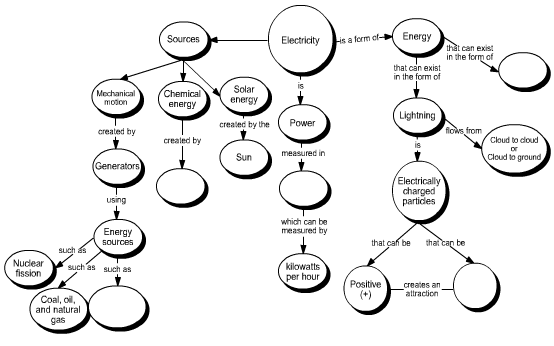

The Best Mind-Mapping Techniques for Brainstorming New Ideas
Summary
Reflection Questions
Journal Prompt
Mind-mapping—a dynamic and visual tool for organizing and presenting information—has become increasingly integral in both creative and professional environments for brainstorming and idea generation. This method—characterized by its radial structure emanating from a central idea—allows for the exploration of concepts and their interconnections in a more intuitive and engaging manner than traditional linear note-taking. Given its significance in facilitating creative thinking and problem-solving, we will delve into a comprehensive exploration of various mind-mapping techniques throughout this article. By doing so, we will provide insights into how creative entrepreneurs and their teams can effectively employ mind-mapping to enhance their brainstorming processes and foster innovation in diverse settings.
What is Mindmapping?


Mind mapping is a visual thinking tool that aids in structuring information—helping you to better analyze, comprehend, synthesize, recall, and generate new ideas. It is often used for brainstorming, planning, note-taking, and problem-solving.
Unlike traditional note-taking methods, mind mapping does not follow a linear structure. This non-linear approach reflects the brain’s natural way of associating ideas and allows for a more flexible and creative thinking process.
Mind mapping can be done with pen and paper, or using digital tools and software. The mindmapping technique you choose will depend on your specific process when developing ideas. Regardless, this method is particularly effective because it mirrors the brain’s natural way of working—making it easier to capture and organize thoughts and ideas in a way that is intuitive and engaging.
The Science Behind Mind-Mapping
Cognitive Benefits of Mind-Mapping
Mind-mapping—as a cognitive tool—leverages the brain’s natural inclination for visual information processing. This method capitalizes on the human brain’s ability to associate ideas and concepts through visual cues—thereby enhancing memory retention and recall.
Research in cognitive psychology suggests that mind-mapping facilitates both divergent and convergent thinking—essential components in creative problem-solving. The spatial arrangement of information in mind maps aids in organizing and structuring thoughts—allowing for a more comprehensive and integrated understanding of the subject matter.
Furthermore, the use of colors and images in mind-mapping stimulates the creative side of the brain—making the process not only more engaging but also aiding in deeper cognitive processing.
Research Findings on Mind-Mapping Efficacy
Empirical studies on the efficacy of mind-mapping have yielded promising results in terms of motivation, creative thinking, recall, and problem-solving. For instance, a study conducted at the Barts and the London School of Medicine and Dentistry, University of London aimed to examine the effectiveness of the ‘mind map’ study technique in improving factual recall from written information.
The results showed that recall of factual material improved for both the mind map and self-selected study technique groups immediately compared to the baseline. However, this improvement was more robust after a week for those in the mind map group. The study concluded that mind maps provide an effective study technique when applied to written material, though motivation amongst users needs consideration for broader adoption
Another research piece—focusing on professional settings—indicated that mind-mapping enhanced meeting productivity and collaborative brainstorming outcomes. These findings underscore mind-mapping’s effectiveness in various contexts—ranging from academic learning to professional brainstorming sessions.
Comparison with Traditional Note-Taking Methods


Comparing mind-mapping with traditional note-taking methods reveals distinct advantages. Traditional note-taking often follows a linear, hierarchical format, which can limit the ability to see connections and relationships between different ideas. In contrast, mind-mapping presents information in a non-linear format—making it easier to establish and visualize links between concepts.
This format encourages users to think more holistically and creatively, rather than being constrained by a sequential approach. Additionally, traditional notes can become cumbersome and less engaging over time, whereas mind maps—with their visual appeal and organized structure—facilitate quicker navigation and review of the material.
This comparison highlights mind-mapping as a more dynamic and efficient tool for organizing, learning, and generating ideas.
Fundamental Principles of Mind-Mapping
Core Concepts (e.g., Central Idea, Branching Out)


The core of mind-mapping revolves around the central idea or concept from which all other thoughts radiate. This central idea acts as the focal point—anchoring the various elements that will be added later. Branching out from this central idea are major categories or sub-themes—each represented by a distinct branch.
These branches then further subdivide into finer details—creating a hierarchical structure that mirrors the way the brain organizes information. This branching process is not just a methodological step but a cognitive strategy that mirrors associative thinking—enabling the mapper to explore a wide range of connected ideas and how they interrelate, thereby encouraging a deeper and more holistic understanding of the central concept.
Visual Elements (Use of Colors, Images, and Symbols)
Visual elements are integral to the effectiveness of mind-mapping. The use of colors, images, and symbols not only enhances the aesthetic appeal of a mind map but also plays a critical role in cognitive processing.
Colors can be used to differentiate between themes, highlight important information, or indicate relationships between different elements. This color coding helps in quicker navigation and comprehension of the map’s content.
Similarly, incorporating images and symbols facilitates memory retention and recall, as the brain processes visual information more efficiently than text. These visual cues act as mental triggers—enabling users to remember information more vividly and retrieve it more quickly.
Tips for Effective Mind-Mapping
To maximize the effectiveness of mind-mapping, certain best practices should be followed. Firstly, start with a clear and concise central idea—ensuring it is broad enough to allow for extensive exploration but specific enough to provide a focused direction.
When branching out, use single words or short phrases for each branch—maintaining simplicity and clarity. This practice helps in quickly capturing the essence of an idea without getting bogged down in details.
It is also advisable to keep the mind map balanced—distributing branches evenly around the central idea, as this helps in maintaining an organized structure. Regularly reviewing and updating the mind map can also aid in refining ideas and discovering new connections.
Finally, personalizing the mind map with unique symbols, illustrations, or color schemes can enhance engagement and make the process more enjoyable.
Mind-Mapping Techniques
The Classic Mind-Map
The classic or basic mind map starts with a central idea—typically placed in the center of a blank page. From this central idea, major branches radiate outwards—each representing a key concept or theme related to the main idea. These branches then subdivide into smaller branches for more specific details or subtopics. The process continues—expanding outward, much like the branches of a tree.
To optimize the effectiveness of a classic mind-map, it’s crucial to use clear, concise labeling for branches. Utilizing different colors for separate branches aids in distinguishing between various themes. The incorporation of images and symbols can enhance memory retention. It’s also essential to allow the map to evolve organically, without forcing a rigid structure.
One notable example includes a study where students used classic mind-maps for summarizing course content—resulting in improved comprehension and retention compared to traditional note-taking methods.
Computer-Assisted Mind-Mapping
Various software tools are available for digital mind-mapping—ranging from basic free versions to advanced paid platforms. These tools offer features like drag-and-drop interfaces, easy editing, and the ability to incorporate multimedia elements.
Advantages of Digital Mind-Mapping
Digital tools facilitate easier editing and reorganization of mind maps, unlike paper-based maps. They also enable the integration of various media types, such as images, videos, and hyperlinks—making the maps more interactive and resource-rich.
How to Choose the Right Tool or Mind-Mapping Software
Selecting the right software depends on individual needs. For basic brainstorming, simple free tools might suffice, whereas complex projects might benefit from more advanced features like collaboration capabilities, cloud storage, and integration with other productivity tools.
Group Mind-Mapping
Group mind-mapping involves participants contributing ideas simultaneously—fostering a collaborative environment. This approach can be facilitated through round-table discussions or brainstorming sessions.
Incorporating Group Dynamics
Effective group mind-mapping requires acknowledging and integrating diverse perspectives. It’s important to create an inclusive environment where all participants feel comfortable sharing ideas.
Virtual Mind-Mapping Sessions
With the rise of remote working, virtual mind-mapping sessions have become popular. These sessions can be conducted using online mind-mapping tools that allow real-time collaboration and contribution from team members, irrespective of their physical location.
Tips to Enhance Creativity through Mind-Mapping
Combining Mind-Mapping with Other Creativity Techniques
Mind-mapping can be synergistically combined with other creativity-enhancing techniques to yield more comprehensive results. For instance, incorporating the SCAMPER (Substitute, Combine, Adapt, Modify, Put to another use, Eliminate, Reverse) method into mind-mapping can help explore different aspects of an idea or problem.
Another approach is to integrate brainstorming sessions prior to mind-mapping—allowing for a free flow of ideas that can later be structured and expanded in a mind map. This combination not only enhances creativity but also ensures a more thorough exploration of ideas.
Advanced Organizational Strategies
To further harness the power of mind-mapping in organizing thoughts and ideas, advanced strategies can be employed. Layering information—where primary ideas are expanded into secondary and tertiary layers—helps in delving deeper into each concept.
Using cross-linkages between different branches of a mind map can illustrate how different ideas interconnect—providing a more holistic view. Additionally, implementing a prioritization system within the mind map—such as using different colors or symbols to denote importance—can aid in focusing on key areas.
Overcoming Common Mind-Mapping Challenges
One of the common challenges faced in mind-mapping is managing the complexity that arises as a map grows. This can be mitigated by breaking down large mind maps into smaller, more focused sub-maps. Another challenge is maintaining clarity and avoiding clutter.
To overcome this, it is essential to regularly review and refine the mind map—removing redundant information and ensuring that each element serves a purpose. For those who struggle with starting a mind map, beginning with a brainstorming session or using mind map templates can provide a structured starting point.
Lastly, for individuals who find it challenging to think visually, practicing with simple maps and gradually incorporating more visual elements can help in developing this skill.
Final Thoughts on Mind Maps


In this article, we methodically unpacked the concept and practical applications of each mind mapping technique—highlighting their roles in enhancing brainstorming, developing a business strategy, project management, and creative ideation. We’ve explored various mind-mapping techniques—from basic principles to advanced strategies—offering a detailed guide for effective use in both personal and professional contexts.
Now, we invite readers to experiment with concept mapping techniques—finding the ones that best suit their unique needs and scenarios. From project managers to solopreneurs, there is a mind mapping tool out there for you! Have you tried any of the mind mapping examples listed above? Let us know how you use these techniques in the comments below.








